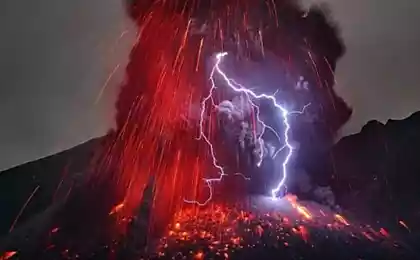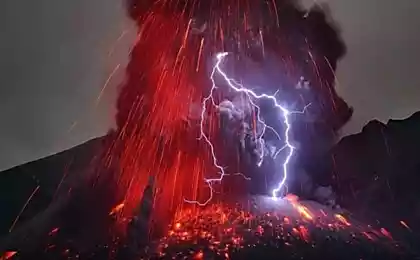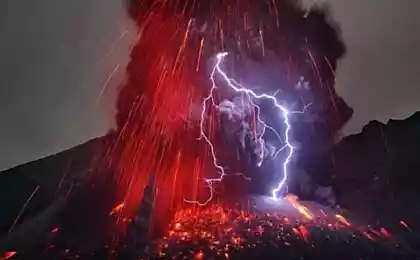633
Clouds Asperatus. Where are they?
I am interested in this topic. And the truth is, where did they come? 5 photos and bukovki.

When the clouds (and clouds) in the normal state of precipitation. Starter, says that the clouds parted, but there was an increase in temperature. Something is wrong here.
I drew attention to hydrogen. Formula H2. In an atmosphere of hydrogen is formed continuously from the decomposition of water sunlight (evaporation). With low weight, the hydrogen molecule have a high rate of diffusion movement (close to the second space) and entering the upper atmosphere can fly into outer space (Geochemistry of hydrogen to Wikipedia ru.wikipedia.org/wiki/Р 'neous PS ... 80RѕRґ%)
Hydrogen can exist in two forms: as ortho- and para-hydrogen. The equilibrium mixture of both at a given temperature the equilibrium hydrogen gives e-H2. Hydrogen is lighter than air at 14.5 times. As the lightest molecules, hydrogen molecules can move faster and to transfer heat from one body to another. Hence the conclusion - the most thermally conductive hydrogen gas.
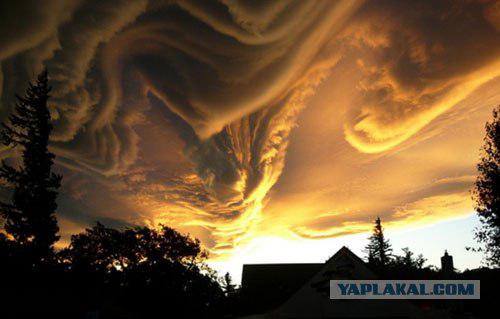
In addition, hydrogen is found in the form of three isotopes: protium, deuteron and tritium (radioactive). If a deuteron against and know that they are stable and occur in nature, for tritium I found little information. I can only say that it is unstable, and its half-life of 12.32 years (again link above to Wikipedia. Section Isotopes).
So with clouds that something is wrong. Instead of rain we get an increase in temperature. Phenomenon!
The first thing that drew attention - is the date of occurrence of clouds Asperatus (Asperatus - rough, uneven).
All sources misspoke about the same date: 1953. Research chronology of events during this period nor to no avail.
I looked through the data for 1952. And here it is: 1952.11.01 - the first hydrogen bomb test in the United States.
So the chronology of the test hydrogen bombs
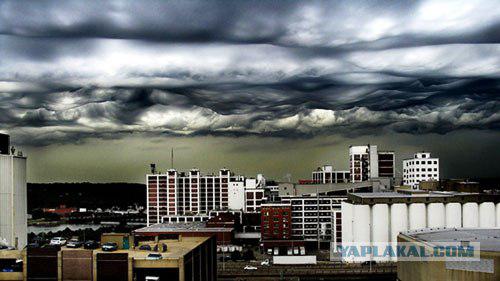
The ominous color. Maybe due to the content of radioactive tritium into the composition of the clouds. Since he has long half-life (and we do not know that it is a catalyst for the disintegration), except that the decay of tritium caused an increase in temperature.
Clouds quickly diverge. This can also be explained by an increased hydrogen content in the composition of the cloud. Let me remind you: hydrogen - the most volatile gas. And thermal conductivity.
Rising temperatures Tritium - heavy radioactive elements that produce heat. The cloud contains enhance its content. "Nature" (not resulting from tests of hydrogen bombs) Tritium is produced in the upper atmosphere by cosmic radiation of molecules N and O. Then, tritium as a result of oxidation reactions and isotope exchange in the form of water falls to the ground.
The unusual shape. Again - the high content of hydrogen. These clouds will always reflect and "flex" under the influence of ascending currents from the ground and horizontal airflows.
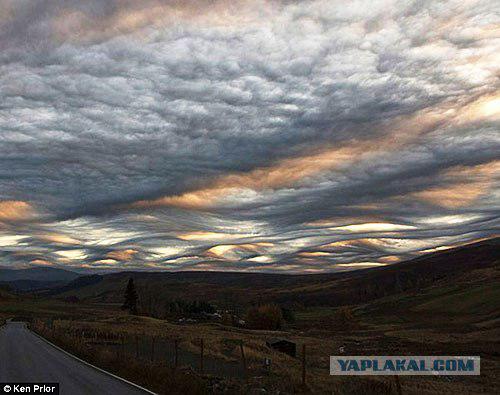
Based on these facts, I can assume that the clouds Aspertus - nothing else, as the effects of the test hydrogen bombs. As part of the clouds is tritium, which destroys the water molecules contained in the clouds, and raises the temperature in those areas where these clouds appear. In addition, rapidly evaporating into the upper atmosphere, the isotope tritium turning into water in the form of precipitation falls to the ground.
According to estimates for 1970 tritium content in the oceans was 250 kg, 45 kg of continental waters, in the air of 3 kg. Today, these figures should be much higher
Unfortunately, my knowledge of chemistry and physics of natural phenomena are not deep. Therefore, I stop here.
I have all my friends!
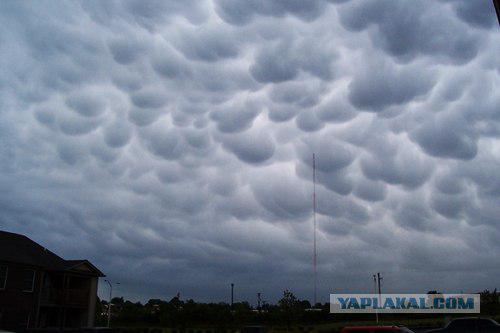
Source:

When the clouds (and clouds) in the normal state of precipitation. Starter, says that the clouds parted, but there was an increase in temperature. Something is wrong here.
I drew attention to hydrogen. Formula H2. In an atmosphere of hydrogen is formed continuously from the decomposition of water sunlight (evaporation). With low weight, the hydrogen molecule have a high rate of diffusion movement (close to the second space) and entering the upper atmosphere can fly into outer space (Geochemistry of hydrogen to Wikipedia ru.wikipedia.org/wiki/Р 'neous PS ... 80RѕRґ%)
Hydrogen can exist in two forms: as ortho- and para-hydrogen. The equilibrium mixture of both at a given temperature the equilibrium hydrogen gives e-H2. Hydrogen is lighter than air at 14.5 times. As the lightest molecules, hydrogen molecules can move faster and to transfer heat from one body to another. Hence the conclusion - the most thermally conductive hydrogen gas.

In addition, hydrogen is found in the form of three isotopes: protium, deuteron and tritium (radioactive). If a deuteron against and know that they are stable and occur in nature, for tritium I found little information. I can only say that it is unstable, and its half-life of 12.32 years (again link above to Wikipedia. Section Isotopes).
So with clouds that something is wrong. Instead of rain we get an increase in temperature. Phenomenon!
The first thing that drew attention - is the date of occurrence of clouds Asperatus (Asperatus - rough, uneven).
All sources misspoke about the same date: 1953. Research chronology of events during this period nor to no avail.
I looked through the data for 1952. And here it is: 1952.11.01 - the first hydrogen bomb test in the United States.
So the chronology of the test hydrogen bombs

The ominous color. Maybe due to the content of radioactive tritium into the composition of the clouds. Since he has long half-life (and we do not know that it is a catalyst for the disintegration), except that the decay of tritium caused an increase in temperature.
Clouds quickly diverge. This can also be explained by an increased hydrogen content in the composition of the cloud. Let me remind you: hydrogen - the most volatile gas. And thermal conductivity.
Rising temperatures Tritium - heavy radioactive elements that produce heat. The cloud contains enhance its content. "Nature" (not resulting from tests of hydrogen bombs) Tritium is produced in the upper atmosphere by cosmic radiation of molecules N and O. Then, tritium as a result of oxidation reactions and isotope exchange in the form of water falls to the ground.
The unusual shape. Again - the high content of hydrogen. These clouds will always reflect and "flex" under the influence of ascending currents from the ground and horizontal airflows.

Based on these facts, I can assume that the clouds Aspertus - nothing else, as the effects of the test hydrogen bombs. As part of the clouds is tritium, which destroys the water molecules contained in the clouds, and raises the temperature in those areas where these clouds appear. In addition, rapidly evaporating into the upper atmosphere, the isotope tritium turning into water in the form of precipitation falls to the ground.
According to estimates for 1970 tritium content in the oceans was 250 kg, 45 kg of continental waters, in the air of 3 kg. Today, these figures should be much higher
Unfortunately, my knowledge of chemistry and physics of natural phenomena are not deep. Therefore, I stop here.
I have all my friends!

Source:
















